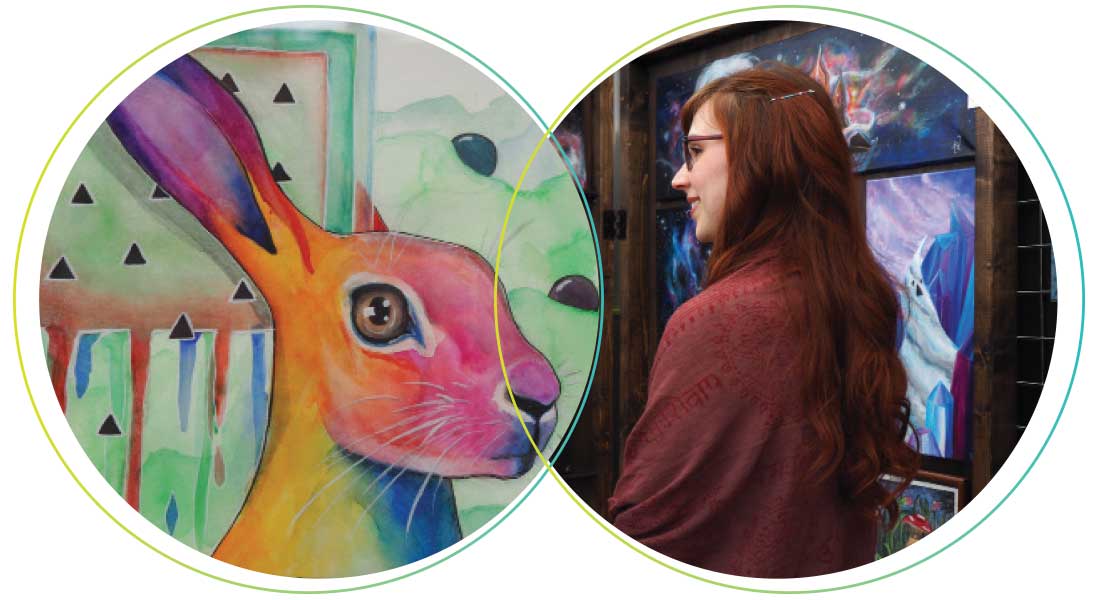
Kacy Doucet ('15 BSc) sits at a computer and watches as rabbits and wolves move across the screen, their colours blending together in swirls and bursts.
As a research assistant in the U of A's Artificial General Intelligence Lab, Doucet is helping use AI to model predator-prey relationships. The lab is managed by Vadim Bulitko, a computing science professor known for his focus on interdisciplinarity and his expertise in video games. Together, Bulitko and Doucet found a role that fits her unique blending of art and science.
Although Doucet's background is in biology and psychology, the rabbits and wolves she works with aren't simulating real animals. Instead, the lab is using the simulation to identify interesting behaviours that can be applied to ambient non-player characters in video games. Non-player characters are an important feature in modern video games, adding colour and interest, as well as serving as plot devices and providing assistance to players.
Doucet brings not only her background in science to the project but also her experience as an artist. The connection between the two fields has always interested her.
"Life happens in the intersections for a lot of people," she says. "Where art and science intersect, that's where the most exciting things are."
She's been painting and sketching since childhood, but after putting art aside to focus on her undergraduate studies, Doucet now finds herself exhibiting her art locally. "I always want to have a balance between art and science. I think they inspire each other," she says. "If I weren't working in science at all, my art would lack something."
The predator-prey simulations Doucet is working on look like art themselves, with the animal agents "shouting" colours onto themselves to model camouflage. While the ones and zeroes come together to create stunning images, Doucet is also interested in the lives of each individual agent, something she's been exploring in her paintings.
"It's all just numbers in the computer," she says. "But I can't help but think about what's going on, and-if this were a real individual-what would they be experiencing?"
Doucet's work in the lab has opened up new questions for her about what intelligence is and where creativity fits.
"AI is about more than creating sophisticated calculators. If you want to create something that can think dynamically, you have a lot to learn about what the thinking process entails," she says.
"I think the way that we solve problems is creative."